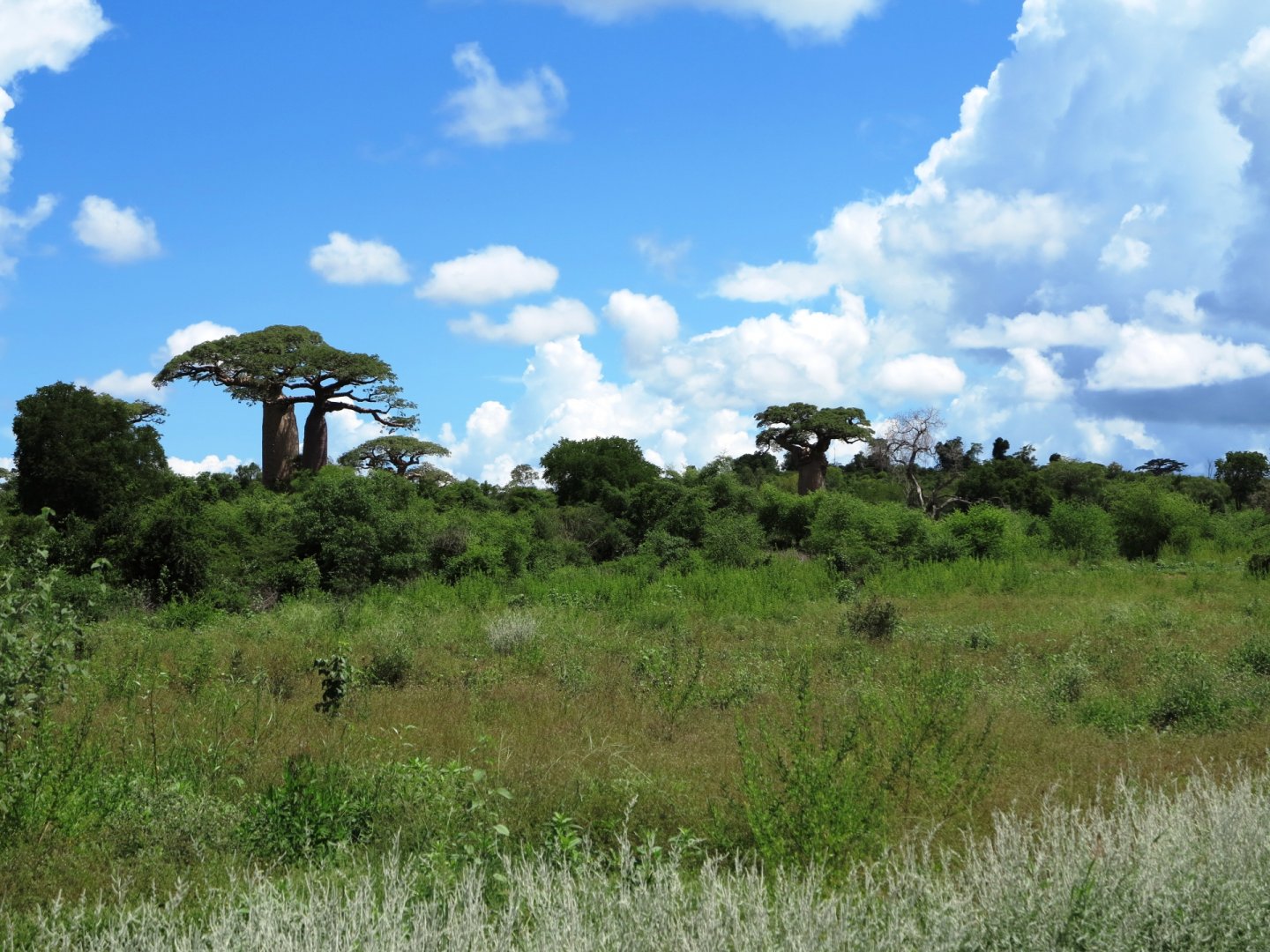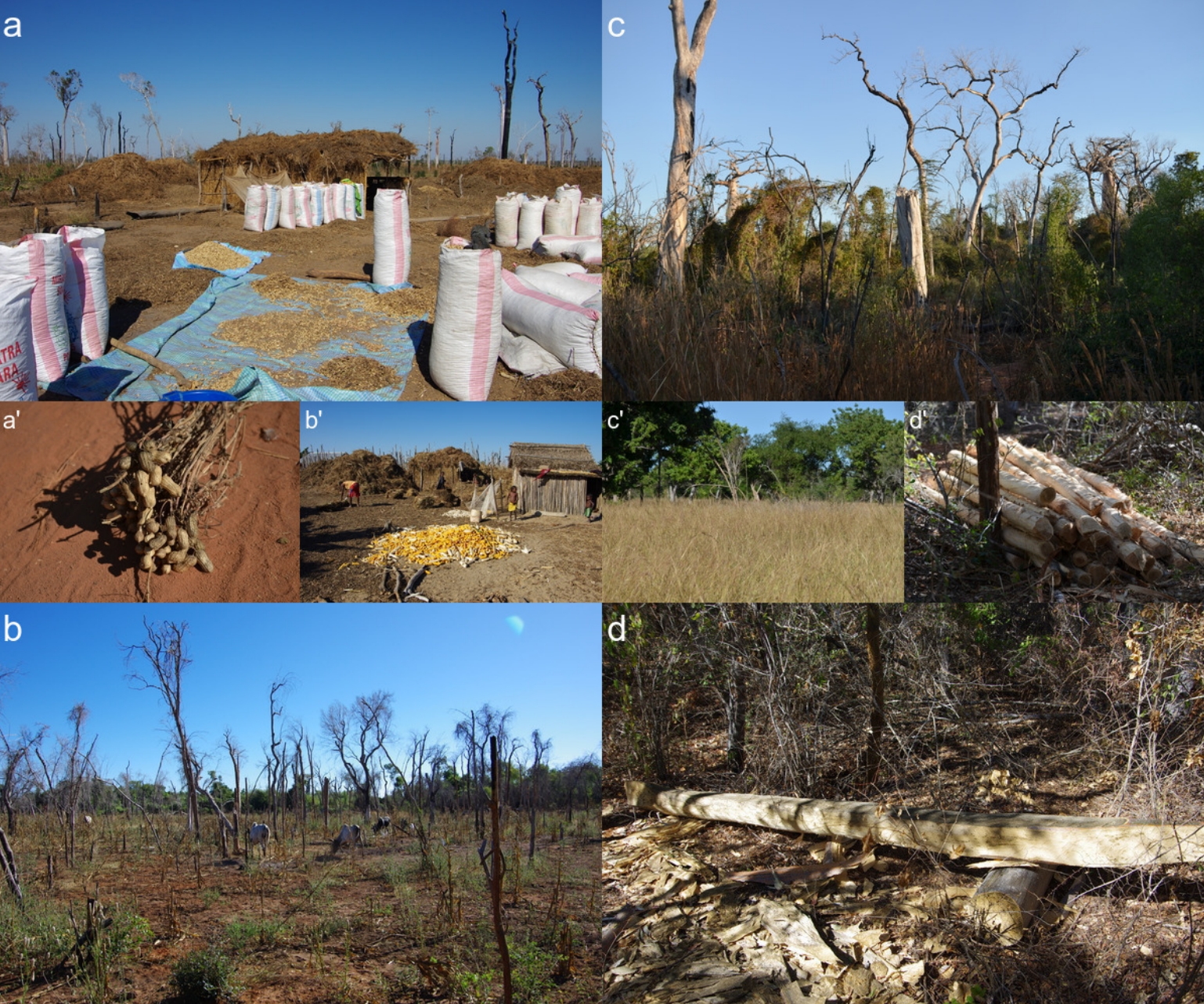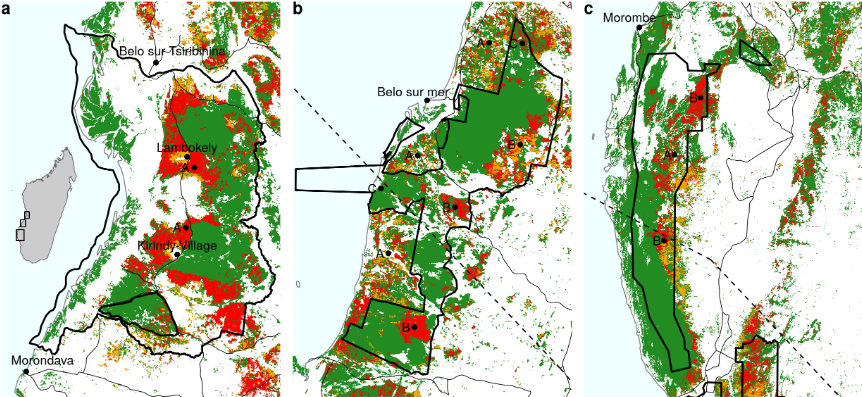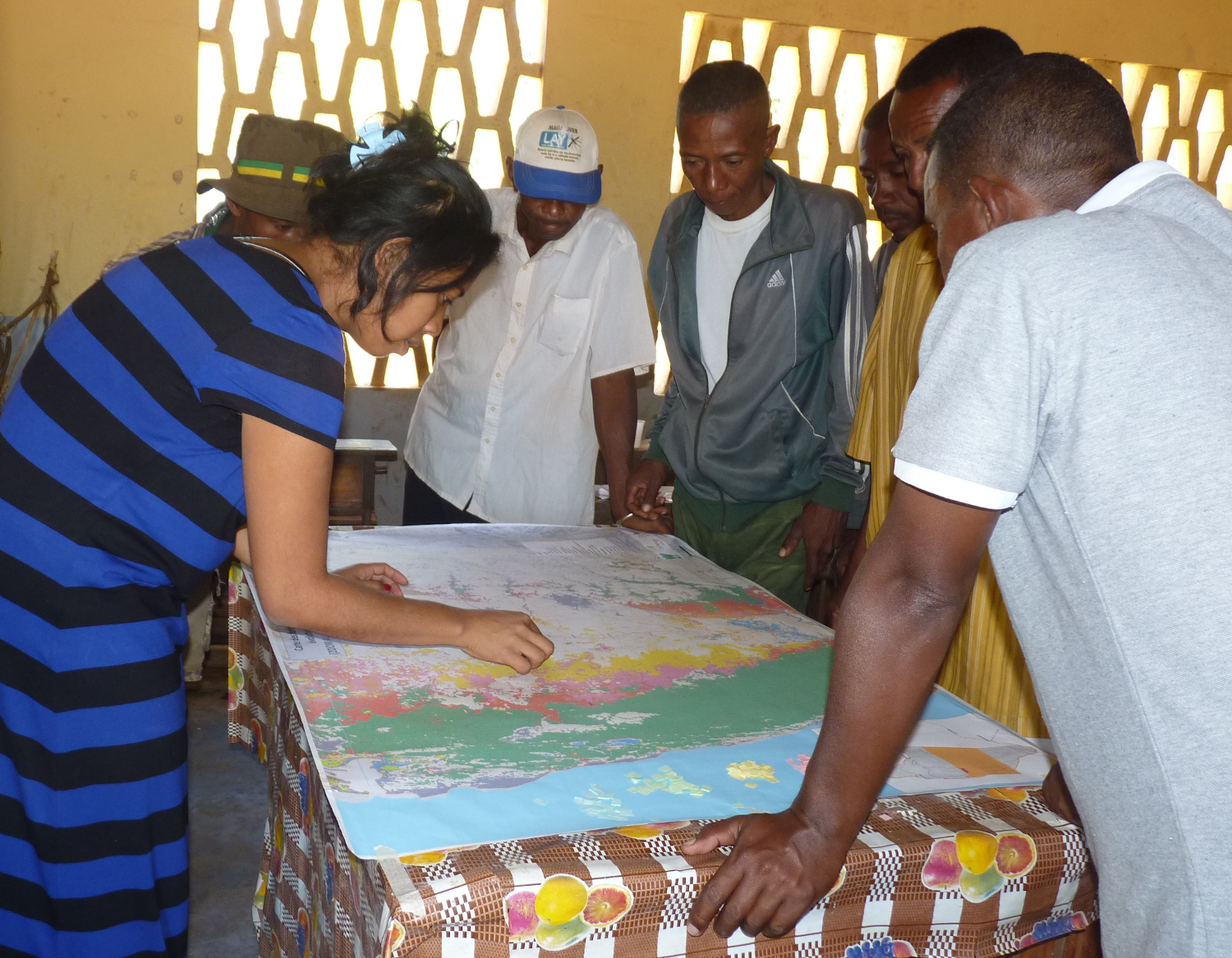

Peanut and maize, main deforestation causes in southwestern Madagascar?
Madagascar is known for its rare and threatened biodiversity and for its high rate of deforestation. Deforestation in the unique dry forest ecosystem in western Madagascar is even higher than in the rest of the country with a loss of more than 2% of the cover each year.
Within the framework of two projects developed in partnership with Nitidæ (Mikea et BiosceneMada), two missions took place in 2016 in the Mikea National Park, in the Menabe protected area and in the Kirindy-Mite National Park to understand the particular factors explaining deforestation in this zone. The same findings were noted and were the subject of a publication available as a preprint at the bottom of the page.

Main causes of deforestation in Western Madagascar. a-a’:Slash-and-burn agriculture (“hatsake”) for peanut crop. Peanut (a’) is cultivated as a cash crop. Most of the production is at the destination of the domestic market. b-b’: Slash-and-burn agriculture for maize crop. Maize (b’) is cultivated for auto-consumption and as a cash crop. The production of maize is at the destination of the domestic market and is used in particular for livestock feeding. c-c’: Cyclone followed by uncontrolled fires. Cyclone “Fanele”(2009) caused tree mortality and accumulation of wood fuel on the ground. As a consequence, uncontrolled fires set on nearby pastures (c’) spread over large areas of forest after 2009. d-d’: Illegal logging. Timbers are used for house and dugout canoe constructions
As it is often the case, main cause is slash-and-burn agriculture. However, it is practiced here to supply the national market with maize (mainly for livestock) and the Asian market with peanut. The second cause is uncontrolled bushfires, set to gain land from the forest for livestock or agriculture and accentuated by forest degradation due to illegal logging of precious woods (under the cover of certain authorities) or the damage caused by frequent cyclones in the area (damages accentuated themselves by forest degradation).

Historical deforestation on the period 2000–2010–2017 in the three study areas. The dashed lines on b) and c) show the trajectories of the cyclones “Fanele” (January 2009) and “Haruna” (February 2013), respectively (source: JTWC, https://www.metoc.navy.mil/jtwc). green: forest cover in 2017, orange: 2000–2010 deforestation, red: 2010-2017 deforestation (Vieilledent et al., 2018). In the study areas, the main causes of deforestation are: (A) slash-and-burn agriculture (“hatsake”) for maize and peanut crops, (B) cyclones followed by uncontrolled fires, and (C) illegal logging.
The deforestation fronts through agriculture and fires, as well as the various intermediaries intervening along the supply chains would be managed by a certain local elite, sometimes revealing conflicts of interest. Moreover, protected area managers do not have the legislative or financial means to intervene effectively. To curb the rate of deforestation, governance and regulation of the national market seem to be two important levers.

This study is based on surveys conducted in 2016 among local farmers, fokontany (township) representative and environmental stakeholders in the three study areas. The objectives of the surveys were firstly to identify the causes of the deforestation and secondly to assess the efficiency of the conservation actions implemented by the organisations in charge of the management of the protected areas. Information from field surveys was cross-checked and complemented by a review of technical reports on the maize and peanut sectors in Madagascar and scientific studies on the deforestation process in south-east Madagascar. The authors also used the FAOSTAT to obtain information on the national production of maize and peanut and the UN Comtrade website to obtain information on the exportations.
Article abstract:

